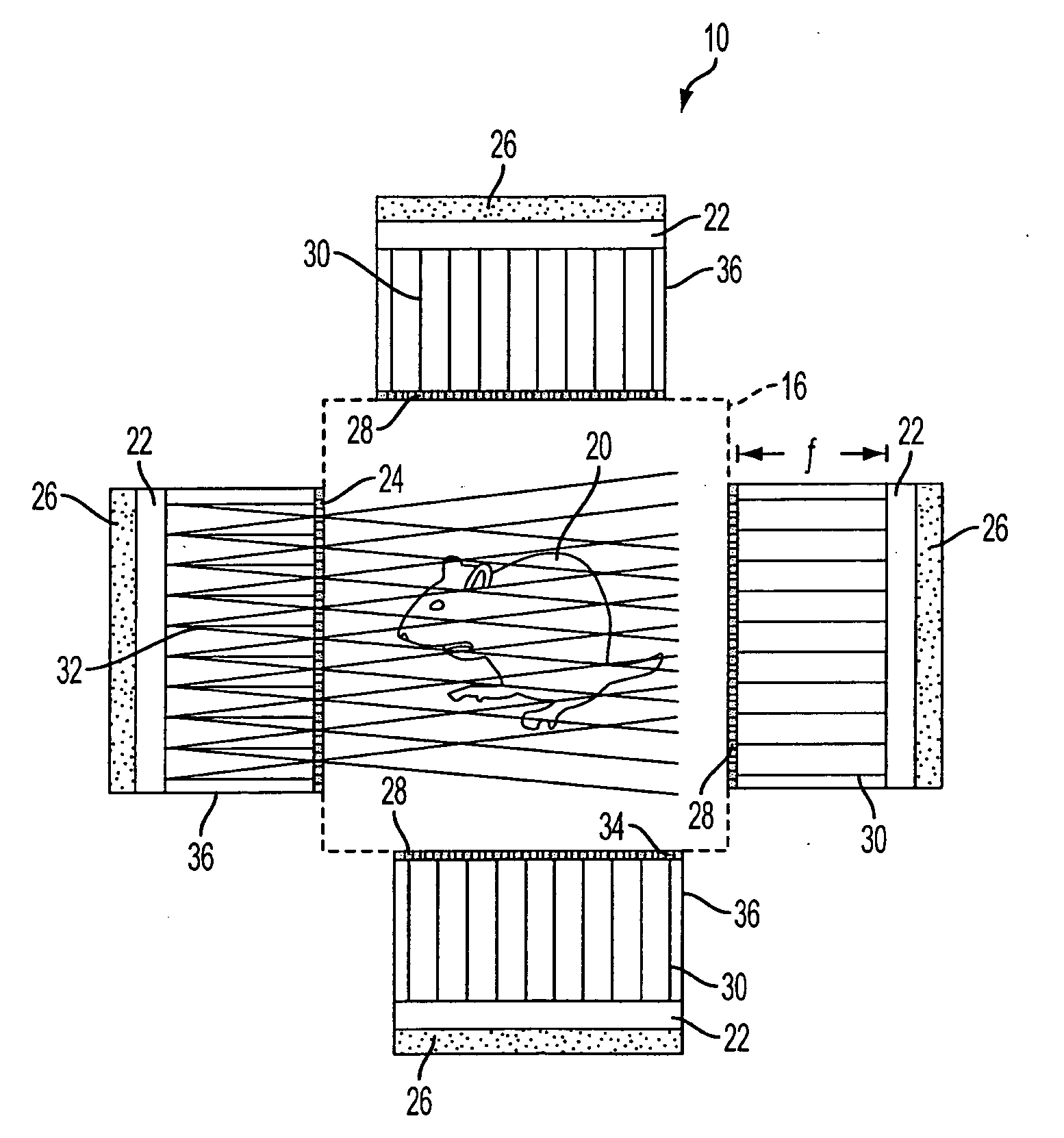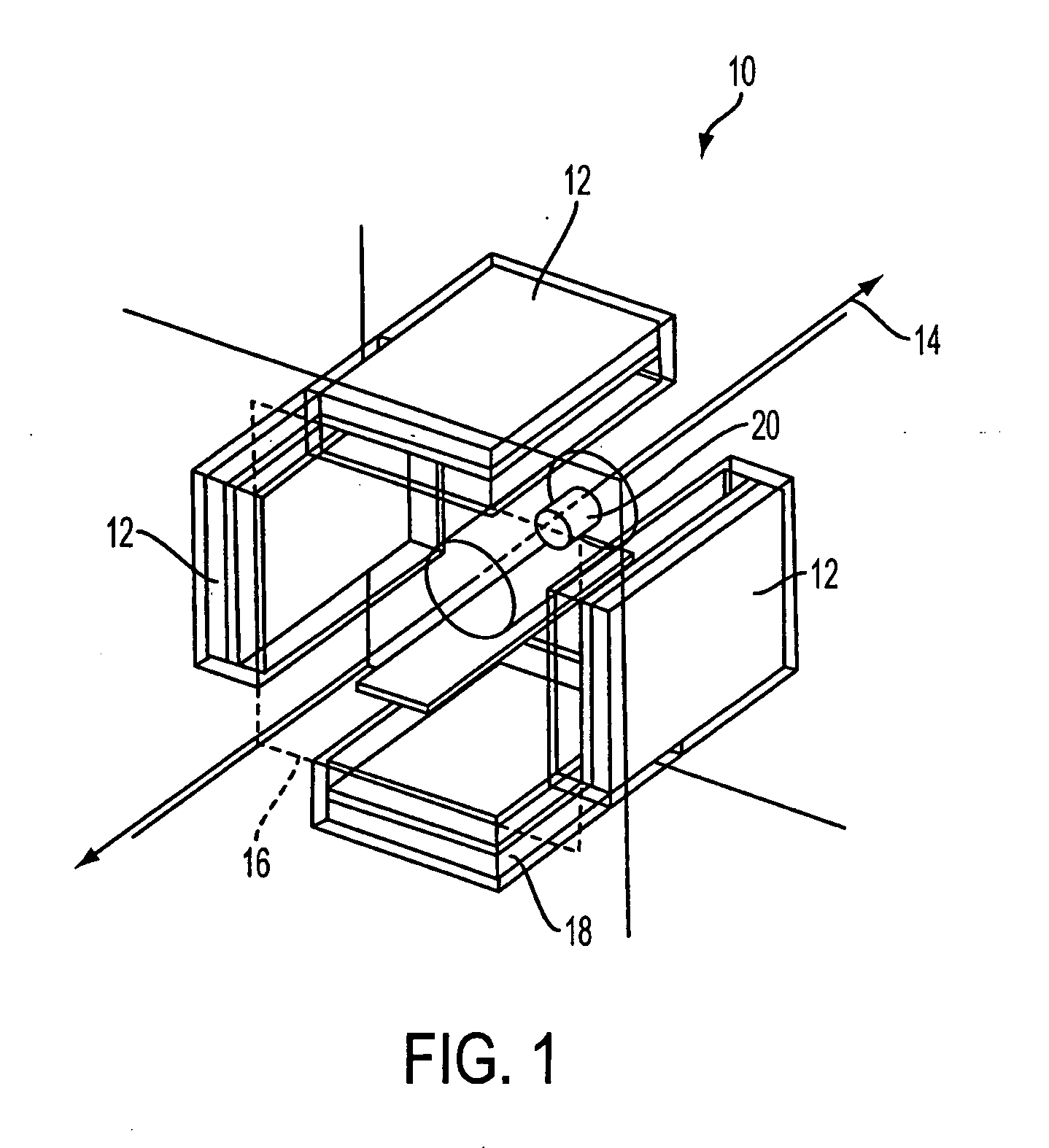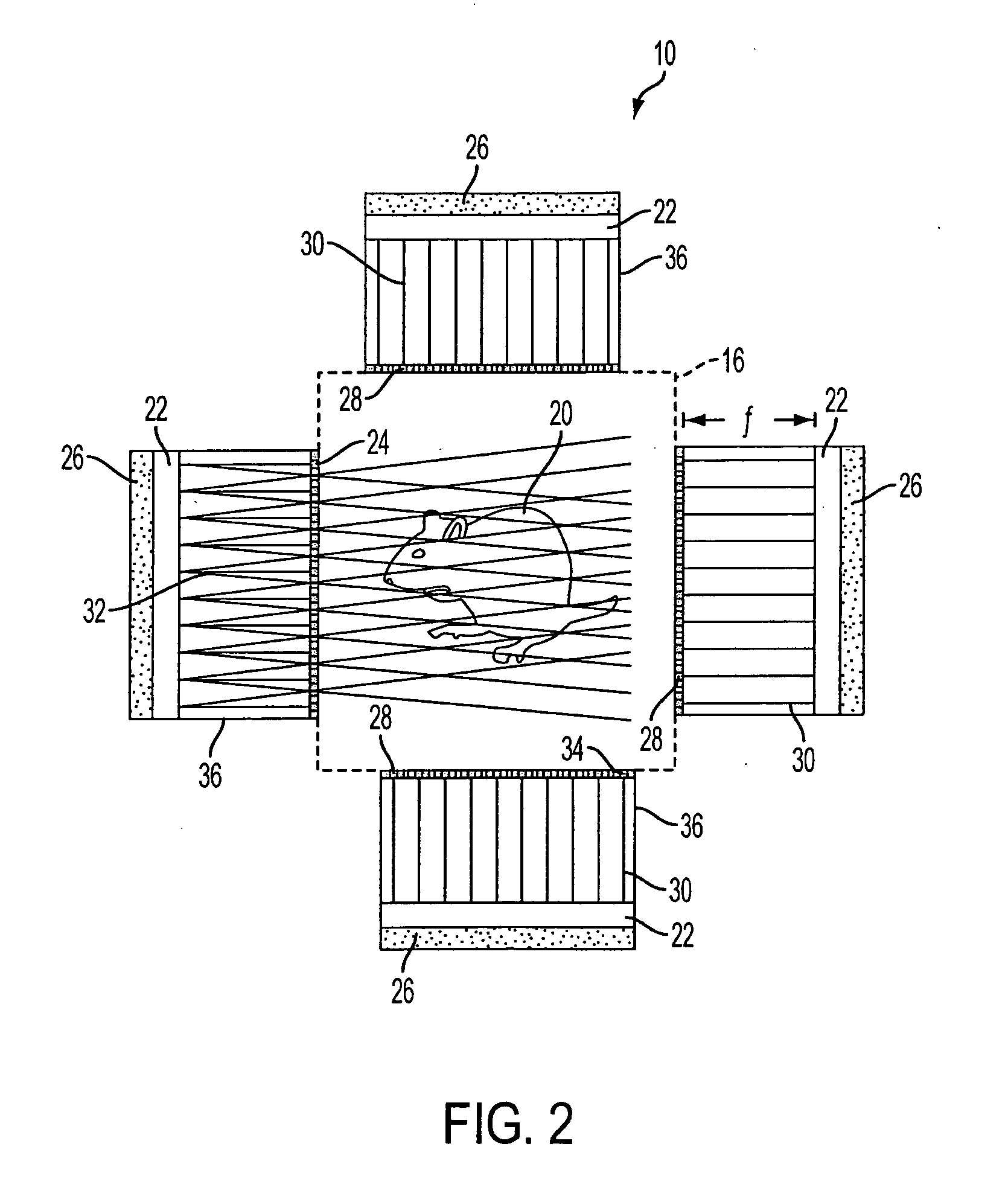Preclinical SPECT system using multi-pinhole collimation
a spectroscopic system and multi-pinhole technology, applied in the field of nuclear medicine, can solve the problems of not being able to increase the intrinsic spatial resolution of the gamma camera, the gantry system is relatively expensive subsystem of the diagnostic tool, and the actual unit rotation of the gantry requires a large degree of spa
- Summary
- Abstract
- Description
- Claims
- Application Information
AI Technical Summary
Benefits of technology
Problems solved by technology
Method used
Image
Examples
Embodiment Construction
[0034]Referring now to the figures, FIGS. 1 and 6 disclose example embodiments of preclinical nuclear imaging detector systems according to the instant invention. The detectors of FIG. 1 are generally disposed in a rectangular or square configuration, whereas the detectors of FIG. 6 are generally disposed in an arcuate configuration. Generally, a preclinical nuclear imaging detector system 10 comprises one or more detector assemblies 12 secured to a gantry and / or support structure 11. Detector assemblies 12 are radially disposed about an axis 14 to thereby describe a perimeter 16 or a portion thereof and are optionally fixed relative to gantry and / or support structure 11. In the embodiment illustrated in FIG. 1, preclinical nuclear imaging detector system 10 further includes an object table 18 which is further shown supporting object 20, e.g., a phantom or test object such as a laboratory animal. Referring now to FIGS. 2 to 5, detector assembly 12 is shown as comprising a scintillat...
PUM
 Login to View More
Login to View More Abstract
Description
Claims
Application Information
 Login to View More
Login to View More - R&D
- Intellectual Property
- Life Sciences
- Materials
- Tech Scout
- Unparalleled Data Quality
- Higher Quality Content
- 60% Fewer Hallucinations
Browse by: Latest US Patents, China's latest patents, Technical Efficacy Thesaurus, Application Domain, Technology Topic, Popular Technical Reports.
© 2025 PatSnap. All rights reserved.Legal|Privacy policy|Modern Slavery Act Transparency Statement|Sitemap|About US| Contact US: help@patsnap.com



